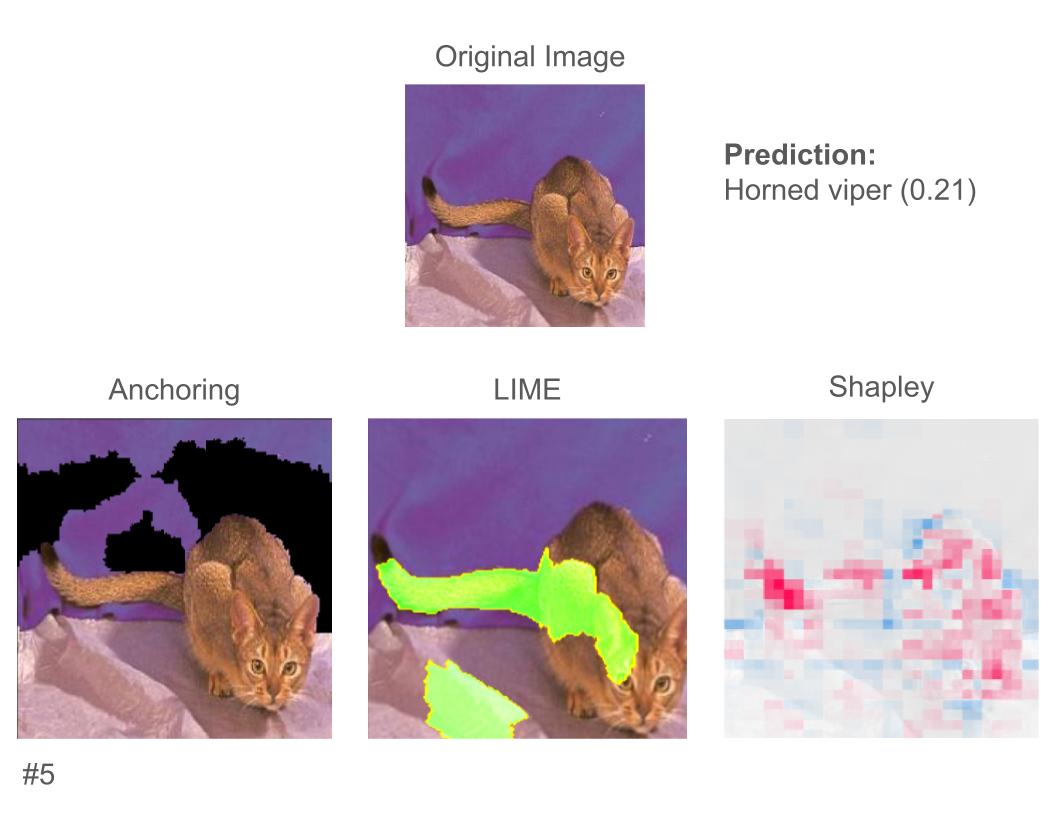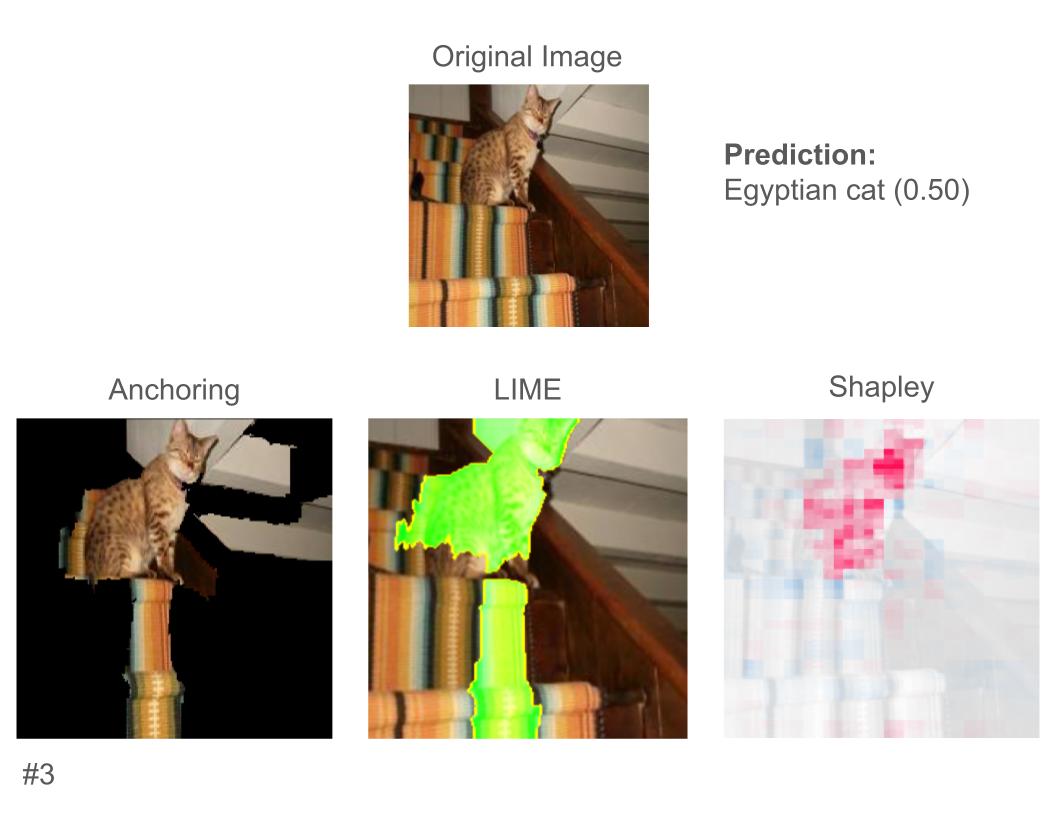ResNet: Qualitative Takeaways
LIME and Anchoring more intuitive...
Multiple participants noted that LIME and Anchoring produced more intuitive explanations than Shapley. One participant said "I can kind of see a snake in Shapley but there is no 'oh okay' moment like LIME has" about the explanations below of the model's "horned viper" prediction.

Another participant said about the image of the cat with the roses that they "liked LIME and Anchoring more because it is possible to see the image", which contrasts with the heat map in Shapley partially obscuring the images it is explaining, as a participant also noted "it's hard to see the pixels in Shapley" about the image with the cat in the box.


But Shapley still preferred
Despite this, 9 of our 12 participants still named Shapley as their favorite technique. One reason was that it was more likely to highlight only the relevant parts of the image. Regarding the explanations for the picture of the cat on the stairs, one participant said "highlighting the stairs is a little weird in LIME and Anchoring", and another participant pointed out that "Shapley makes completely clear [the model] is looking at the ball" about the picture of the pug with the tennis ball, which contrasts with LIME and Anchoring highlighting much of its face.

When comparing all of the techniques after seeing all of the examples, one participant said "Shapley was the most consistent". Another upside of Shapley was its ability to capture values, with different participants saying "I like Shapley because it reflects degrees of importance", and "big fan of heat map, it provides the most helpful information".